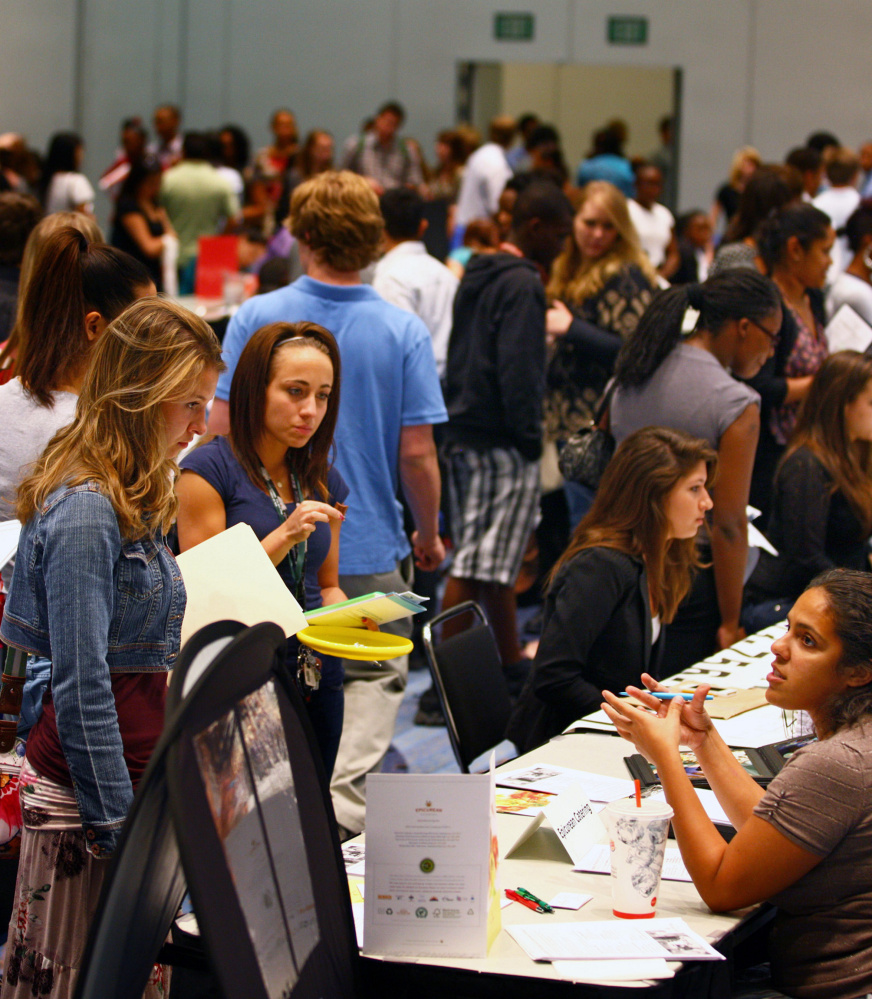This summer American teenagers should find it a little easier to get a job – if they want one.
The U.S. unemployment rate fell to 4.3 percent in May, the lowest in 16 years, so teenagers started looking for summer jobs in the best labor market since the tech boom of the early 2000s. The May unemployment rate for 16- to 19-year-olds was 14.3 percent, but teenagers usually find it harder to find jobs than their more experienced elders. Back in 2009, the teenage jobless rate hit 27 percent.
A CareerBuilder survey of 2,587 employers released last month found that 41 percent were planning to hire seasonal workers for the summer, up from 29 percent last year.
But the unemployment rate measures joblessness only among people who are actively looking for work. And many American teenagers aren’t.
For Baby Boomers and Generation X, the summer job was a rite of passage. Today’s teenagers have other priorities. Teenagers are likeliest to be working in July, according to data from the Bureau of Labor Statistics that’s not seasonally adjusted. In July of last year, 43 percent of 16- to 19-year-olds were either working or looking for a job. That’s 10 points lower than in July 2006. In 1988 and 1989, the July labor force participation rate for teenagers nearly hit 70 percent.
Whether you’re looking at summer jobs or at teenager employment year-round, the work trends for teenagers show a clear pattern over the last three decades. When recessions hit, in the early 1990s, early 2000s, and from 2007 to 2009, teenage labor participation rates plunged. As the economy recovers, though, teenage labor doesn’t bounce back. The BLS expects the teenage labor force participation rate to drop below 27 percent in 2024, or 30 points lower than the peak seasonally adjusted rate in 1989.
Why aren’t teenagers working? Lots of theories have been offered: They’re being crowded out of the workforce by older Americans, now working past 65 at the highest rates in more than 50 years. Immigrants are competing with teenagers for jobs; a 2012 study found that less educated immigrants affected employment for U.S. native-born teenagers far more than for native-born adults.
Parents are pushing kids to volunteer and sign up for extracurricular activities instead of working, to impress college admission counselors. College-bound teenagers aren’t looking for work because the money doesn’t go as far as it used to. “Teen earnings are low and pay little toward the costs of college,” the BLS noted this year. The federal minimum wage is $7.25 an hour. Elite private universities charge tuition of more than $50,000.
Or maybe, as cranky old people have asserted for generations, teenagers are just getting lazy.
A recent BLS analysis offers another theory, backed up by solid data. It appears that millions of teenagers aren’t working because they’re studying instead.
Over the last few decades, education has taken up more of teenagers’ time, as school districts lengthen both the school day and the academic year. During the school year, academic loads have gotten heavier. Education is also eating up teenagers’ summers. They aren’t going to summer school just because they failed a class and need to catch up. They’re also enrolling in enrichment courses and taking courses for college credit.
In July of last year, more than two in five 16- to 19-year-olds were enrolled in school.
Send questions/comments to the editors.



Comments are no longer available on this story